Boca Juniors
Club Atlético Boca Juniors (Spanish pronunciation: [kluβ aˈtletiko ˈβoka ˈʝunjoɾs]) is an Argentine professional sports club based in La Boca neighbourhood of Buenos Aires. Boca Juniors is mostly known for its professional football team which, since its promotion in 1913, has always played in the Argentine Primera División, becoming the most successful team of Argentina in number of official titles, with 69 won to date.[1][2] National titles won by Boca Juniors include 34 Primera División championships,[3][4] and 13 domestic cups.[5] Boca Juniors also owns an honorary title awarded by the Argentine Football Association for their successful tour of Europe in 1925.[6][7]
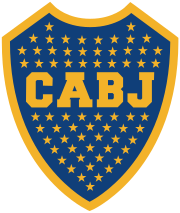 | |||
| Full name | Club Atlético Boca Juniors | ||
|---|---|---|---|
| Nickname(s) | Xeneizes (Genoese) Azul y Oro (Blue and Gold) La Mitad Más Uno (Half plus One) | ||
| Founded | 3 April 1905 | ||
| Ground | La Bombonera La Boca, Buenos Aires | ||
| Capacity | 49,000 | ||
| Chairman | Jorge Amor Ameal | ||
| Manager | Miguel Ángel Russo | ||
| League | Superliga Argentina | ||
| 2019–20 | 1st (Champion) | ||
| Website | Club website | ||
|
| |||
| Active departments of C.A. Boca Juniors | ||||||||||||||||||||||||||||||
|---|---|---|---|---|---|---|---|---|---|---|---|---|---|---|---|---|---|---|---|---|---|---|---|---|---|---|---|---|---|---|
|
Internationally, Boca Juniors has won a total of 22 international titles,[8][9][10] with 18 organised by CONMEBOL[11] and the rest organised jointly by the Argentine and Uruguayan Associations. Consequently, Boca is ranked third in the world in terms of number of complete international titles, after Real Madrid (26) and Egyptian side Al Ahly (24).[12] Boca Juniors' international achievements also include Tie Cup,[13] Copa de Honor Cousenier,[14] and Copa Escobar-Gerona,[15] organized jointly by AFA and AUF together.
Their success usually has Boca ranked among the IFFHS's Club World Ranking Top 25, which they have reached the top position six times (mostly during the coaching tenure of Carlos Bianchi).[16] Boca was named by the IFFHS as the top South American club of the first decade of the 21st century (2001–2010).[17] Boca Juniors is also known to be one of the most popular football clubs in Argentina, along with River Plate.[18][19]
Boca has always had a fierce rivalry with River Plate, as both clubs were established in La Boca. Matches between them are known as the Superclásico, and are one of the most heated rivalries in Argentina and the world, as both clubs are the two most popular in the country. Boca's home stadium is Estadio Alberto J. Armando, which is colloquially known as La Bombonera. The youth academy has produced many Argentine internationals such as Sebastián Battaglia, Nicolás Burdisso, Carlos Tevez, Éver Banega, Nicolás Gaitán and Fernando Gago, who have played or are playing for top European clubs.
In addition to football, Boca Juniors has professional basketball and volleyball teams. Other (amateur) activities held in the club are: athletics, futsal, artistic and rhythmic gymnastics, martial arts (judo, karate and taekwondo), swimming, weightlifting and wrestling.[20]
History
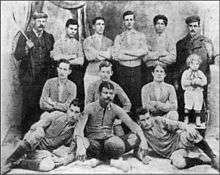
On 3 April 1905, a group of Greek and Italian boys (more specifically from Genoa) met in order to find a club. The house where the meeting was arranged was Esteban Baglietto's and the other four people who attended were Alfredo Scarpatti, Santiago Sana and brothers Ioannis (Juan) and Theodoros (Teodoro) Farengas from Chios and Konstantinos Karoulias from Samos.[21] Other important founders members include Arturo Penney, Marcelino Vergara, Luis Cerezo, Adolfo Taggio, Giovanelli, Donato Abbatángelo, Bertolini.
In 1913, Boca obtained the promotion to Primera División that the team had wanted for many years. This was possible when the Asociación Argentina de Fútbol decided to increase the number of teams in the league from 6 to 15.[22]
In 1925, Boca made its first trip to Europe to play in Spain, Germany and France. The squad played a total of 19 games, winning 15 of them. For that reason Boca was declared "Campeón de Honor" (Champion of Honour) for the 1925 season by the Association.
During successive years, Boca consolidated as one of the most popular teams of Argentina, with a huge number of fans not only in Argentina but worldwide. The club is one of the most successful teams in Argentine football, having won 34 Primera División titles, second only to River Plate with 36. In South American and international club football, Boca Juniors have won 18 titles, the same as A.C. Milan; Boca also won four international official titles (played between teams from the Argentine and Uruguayan Association), although not recognized by FIFA yet.
Those honors include 1919 Tie Cup, 1920 Copa de Honor Cousenier and 1945 and 1946 Copa Escobar-Gerona.
Kit and badge
According to the club's official site, the original jersey colour was a white shirt with thin black vertical stripes, being then replaced by a light blue shirt and then another striped jersey before adopting the definitive blue and gold.[23] Nevertheless, other version states that Boca Juniors' first jersey was pink, although it has been questioned by some journalists and historians who state that Boca, most probably, never wore a pink jersey, by pointing out the lack of any solid evidence and how this version stems from, and is only supported on, flawed testimonies.[24]
Legend has it that in 1906, Boca played Nottingham de Almagro. Both teams wore so similar shirts that the match was played to decide which team would get to keep it. Boca lost, and decided to adopt the colors of the flag of the first boat to sail into the port at La Boca. This proved to be a Swedish ship, therefore the yellow and blue of the Swedish flag were adopted as the new team colours.[25] The first version had a yellow diagonal band, which was later changed to a horizontal stripe.[23]
Through Boca Juniors history, the club has worn some alternate "rare" models, such the AC Milan shirt in a match versus Universidad de Chile (whose uniform was also blue) in the 1963 Copa Libertadores.[26] When Nike became official kit provider in 1996, the first model by the company introduced two thin white stripes surrounding the gold band, causing some controversy.[27][28] The brand also introduced a silver jersey designed exclusively for the 1998 Copa Mercosur. For the 100th. anniversary of the club, Nike launched commemorative editions of several models worn by the club since its foundation, including a version of the 1907 shirt with the diagonal sash, which was worn in two matches during the 2005 Torneo de Verano (Summer championship).[29] Other models were a black and white striped jersey (similar to Juventus FC)[30] and a purple model,[31] worn in the 2012 and 2013 "Torneos de Verano" respectively.
Novertheless, none shirt caused more controversy than the pink model released as the away jersey for the 2013–14 season, which was widely rejected by the fans.[32] Because of that, the introduction of this model (to be initially worn v. Rosario Central) was delayed until the last fixture when Boca played Gimnasia y Esgrima (LP).[33][34] As a replacement for the pink model, Nike designed a fluorescent yellow shirt launched that same season.[35][36]
In 2016, the club wore a black jersey for the first time in its history. Originally launched as the third kit.[37] Although President of the club, Daniel Angelici, had stated that the black kit would never be worn,[38] the kit debuted in a match v. Tigre, only four days after the announcement.[39]
Adidas is the club's current kit supplier since January 2020.[40] The agreement (which will remain in force until 2029) was signed for US 10,069,000 plus 40% in royalties per year for the club.[41]
Kit evolution
Uniforms worn by the team through its history:
1905 [note1 1] |
1905–06 |
1906–07 [note1 2] |
1907–12 [note1 3] |
1913–present |
- Notes
- Some sources state the first shirt was pink, as so did the club itself,[42] although further revisions established the striped black and white as the first shirt adopted by the club.[23] Nike released some versions based on this model, first in 2005 (although only for sale at stores)[43] and then in 2012, although this model was only worn during the Torneo de Verano.[44]
- A similar model was used as the alternate kit in the 2006–07 season, 100 years after it was worn by the first time.
- According to photographic document of those times, the diagonal sash was displayed in both ways, from left to right and vice versa.
| Wikimedia Commons has media related to Boca Juniors kits. |
Kit suppliers and shirt sponsors
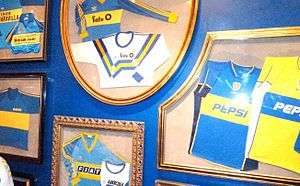

| Period | Kit Manufacturer | Shirt Sponsors |
|---|---|---|
| 1905–80 | Adidas | None |
| 1983 | Vinos Maravilla | |
| 1984 | Dekalb | |
| 1985 | None | |
| 1986–88 | Fate | |
| 1989–92 | FIAT | |
| 1992–95 | Olan | Parmalat |
| 1995–96 | Olan / Topper | Quilmes |
| 1996–01 | Nike | |
| 2001–03 | Pepsi | |
| 2003–04 | Pepsi & Goodyear | |
| 2004–05 | Red Megatone & Goodyear | |
| 2006 | Megatone & Goodyear | |
| 2007–09 | Megatone & Unicef | |
| 2009–11 | LG & Total | |
| 2012–14 | BBVA & Total[45][46] | |
| 2014–16 | BBVA & Citroën | |
| 2016–17 | BBVA & Huawei | |
| 2017–18 | BBVA & ? | |
| 2018–19 | Qatar Airways & Axion | |
| 2020– | Adidas | Qatar Airways & Axion |
Badge
The club has had five different designs for its badge during its history, although its outline has remained unchanged through most of its history. The first known emblem dates from 1911, appearing on club's letterhead papers. In October 1932, the club stated that one star would be added to the badge for each Primera División title won. Nevertheless, the stars would not appear until 1943, on a Report and Balance Sheet.[47]
A version with laurel leaves was launched in 1955 to celebrate the 50th. anniversary of the club,[47] while the emblem with the stars inside has regularly appeared on Boca Juniors uniforms since 1993.[47]
In 1996, the Ronald Shakespear Studio introduced a new badge –with the horizontal band suppressed– as part of a visual identity for the club. The new Boca Juniors image also featured new typography and style.[48][49]
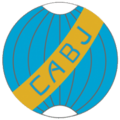 1911–14
1911–14 1920–55
1920–55 1955
1955 1960–70
1960–70 1970–95
1970–95 1996–present
1996–present
Stadium

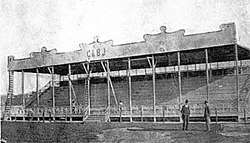

Boca Juniors used several locations before settling on their current ground on Brandsen. Club's first ground was in Dársena Sur[50] of the old Buenos Aires port (currently Puerto Madero) but it was vacated in 1907 as it failed to meet the minimum league requirements. Boca Juniors then used three grounds in the Isla Demarchi area between 1908 and 1912.[51][52] In the first year in the Primera Division (1913) the club hadn't an own stadium and played the home games in the pitches of the other teams, likely in Estudiantes de Buenos Aires in Palermo (on Figueroa Alcorta y Dorrego), but also in Avellaneda (first official derby against the River).[53] Between 1914 and 1915, the club moved away from La Boca for the second time in its history (beyond the 1913), moving to Wilde in the Avellaneda Partido of the Greater Buenos Aires but a relatively poor season[54] and poor attendances in 1915 forced the club to move back to La Boca.
On 25 May 1916, Boca Juniors opened its new stadium at the intersection of Ministro Brin and Senguel streets, playing there until 1924 when the club moved to its current location on Brandsen and Calle Del Crucero (currently Del Valle Iberlucea) streets.[55]
Building of Boca Juniors' current stadium began in 1938, under the supervision of Engineer José L. Delpini. Boca played its home matches in the Ferro Carril Oeste ground in Caballito until it was completed on 25 May 1940.[52] A third level was added in 1953, originating then its nickname La Bombonera ('The Chocolate Box').[56] The stand opposite the Casa Amarilla railway platforms remained mostly undeveloped until 1996, when it was upgraded with new balconies and quite expensive VIP boxes. Three sides of the Bombonera are thus made up of traditional sloping stadium stands, but the fourth side was built vertically, with several seating areas stacked one on top of the other, the only way that makes it stand into the club premises.
La Bombonera is known for vibrating when Boca fans (La 12) jump in rhythm; in particular, the unique vertical side will sway slightly, leading to the phrase, "La Bombonera no tiembla. Late" (The Bombonera does not tremble. It beats)[57][58]
La Bombonera currently has a capacity of around 49,000. The club's popularity make tickets hard to come by, especially for the Superclásico game against River Plate.[59] There are further improvements planned for the stadium, including measures to ease crowd congestion, use of new technology and improved corporate facilities.[60]
List of stadiums used by the club
All of them placed in La Boca with the exception of Wilde (1914–15), located in Avellaneda Partido. Boca Juniors also used the Estudiantes de Buenos Aires (in 1913, then located on Figueroa Alcorta Avenue)[61] and Ferro Carril Oeste stadium (1938–40) as temporary venues.[62]
- Dársena Sud: 1905–07 [50]
- Isla Demarchi: 1908–12 [51]
- Wilde: 1914–15
- Ministro Brin and Senguel: 1916–24
- Brandsen and Del Valle Iberlucea:[note3 1] 1924–38
- Alberto J. Armando (La Bombonera): 1940–present
- Notes
- Formerly, Del Crucero street.
Supporters
Boca Juniors is traditionally regarded as the club of Argentina's working class, in contrast with the supposedly more upper-class base of cross-town arch rival Club Atlético River Plate.[63]
Boca Juniors claims to be the club of "half plus one" (la mitad más uno) of Argentina's population, but a 2006 survey placed its following at 40%,[18][19] still the largest share. They have the highest number of fans, as judged by percentage in their country.
The Boca-River Superclásico rivalry is one of the most thrilling derbies in the world.[64] Out of their 338 previous meetings, Boca have won 126, River have won 107 and there have been 105 draws.[65] After each match (except draws), street signs cover Buenos Aires at fans' own expense, "ribbing" the losing side with humorous posters. This has become part of Buenos Aires culture ever since a Boca winning streak in the 1990s.
In 1975, a film (La Raulito) was made about the life of Mary Esher Duffau, known as La Raulito, a well-known Boca Juniors fan. She died at the age of 74 on 30 April 2008, the same day Boca Juniors played a Copa Libertadores match against Brazilian club, Cruzeiro Esporte Clube with the players and fans observing a minute's silence in her memory.[66]
Nicknames
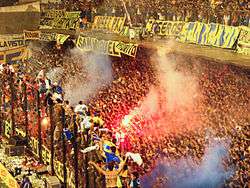
Boca fans are known as Los Xeneizes (the Genoese) after the Genoese immigrants who founded the team and lived in La Boca in the early 20th century.[67]
Many rival fans in Argentina refer to the Boca Juniors' fans as Los Bosteros (the manure handlers), originating from the horse manure used in the brick factory which occupied the ground where La Bombonera stands. Originally an insult used by rivals, Boca fans are now proud of it.[68]
Reflecting the team's colors, Boca's shirt is also called la azul y oro (the blue and gold).[69]
There is also a society which dedicates all of its activities to supporting the team known as la número 12 or la doce (player number doce or 12, meaning "the 12th player")[70] "La doce" is a criminal organization similar to other "barra brava" gangs associated with football clubs in Argentina.[71] Illegal activities by La doce include assault, drug sales and trafficking, extortion, and murder.[72] La doce finances its activities by selling parking, reselling club tickets as well as extorting commission from the sale of players. La doce also extorts Boca Juniors for transportation to domestic and international events as well as their means of financing their activities. If their demands are not met they threaten violence at home matches or to take down club officials.[73]
The naming of "La 12″ (the twelfth player), by which Boca Juniors' fans became known, dates back to the year 1925, during the European tour they made that year. At that time, the team was accompanied by a Boca fan called Victoriano Caffarena, who belonged to a wealthy family and funded part of the tour. During that tour he helped the team in everything, thus establishing a strong relationship with the players, so they named him "Player No. 12″. When they returned to Argentina, Caffarena was as well known as the players themselves. Nowadays, this nickname is used primarily to name their group of supporters, known as "La 12″.[74]
International
Peñas (fan clubs) exist in a number of Argentine cities and abroad in countries such as Russia, Ukraine,[75] Spain,[76] Israel[77] and Japan.[78] Boca Juniors are particularly popular in Japan because of the club's success in recent years at the Intercontinental Cup held in Japan. All over the world, fans are drawn to Boca by the club's international titles, and by the success of Boca players who went on to play in European football such as Hugo Ibarra, Rodolfo Arruabarrena, Diego Cagna, Enzo Ferrero, Roberto Abbondanzieri, Nicolás Burdisso, Fernando Gago, Diego Maradona, Claudio Caniggia, Gabriel Batistuta, Juan Román Riquelme and Carlos Tevez.
Boca have fans throughout Latin America and also in parts of the United States where there has been Latin immigration and where in July 2007, after the club had toured pre-season, it was reported that the club were considering the possibility of creating a Boca Juniors USA team to compete in Major League Soccer.[79]
Rivalries
Boca Juniors has had a long-standing rivalry with River Plate. The Superclásico is known worldwide as one of world football's fiercest and most important rivalries.[80] It is particularly noted for the passion of the fans, the stands of both teams feature fireworks, coloured confetti, flags and rolls of paper. Both sets of supporters sing passionate songs (often based on popular Argentine rock band tunes) against their rivals, and the stadiums are known to bounce with the simultaneous jumping of the fans. Sometimes the games have been known to end in riots between the hardest supporters of both sides or against the police. The English newspaper The Observer put the Superclásico (played at La Bombonera) at the top of their list of 50 sporting things you must do before you die.[81]
The two clubs both have origins in the poor riverside area of Buenos Aires known as La Boca. River however moved to the more affluent district of Núñez in the north of the city in 1923.
Boca Juniors and River Plate have played 338 games all time against each other, with Boca winning 126, River winning 107 and 105 draws. In the First Division Professional Era the two clubs have played 198 games with Boca winning 72, River 66 and 60 draws.[82]
This intense rivalry has not stopped players from playing for both clubs, most notably José Manuel Moreno, Hugo Orlando Gatti, Alberto Tarantini, Oscar Ruggeri, Julio Olarticoechea, Carlos Tapia, Gabriel Batistuta and Claudio Caniggia.
Players
Current squad
- As of 28 May 2020[83]
Note: Flags indicate national team as defined under FIFA eligibility rules. Players may hold more than one non-FIFA nationality.
|
|
Out on loan
Note: Flags indicate national team as defined under FIFA eligibility rules. Players may hold more than one non-FIFA nationality.
|
|
Reserves and Academy
For the reserve and academy squads, see Boca Juniors Reserves and Academy
Records
Most goals
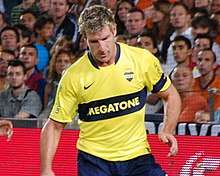
| Rank | Player | Position | Tenure | Goals |
|---|---|---|---|---|
| 1 | FW | 1997–01, 2004–11 | 236 | |
| 2 | FW | 1926–38 | 221 | |
| 3 | FW | 1931–39 | 194 | |
| 4 | FW | 1922–32 | 193 | |
| 5 | FW | 1940–48 | 128 | |
| 6 | FW | 1941–49, 1955 | 123 | |
| 7 | FW | 1932–38 | 115 | |
| 8 | FW | 1941–48 | 98 | |
| 9 | FW | 1911–13, 1915–24 | 96 | |
| 10 | MF | 1996–02, 2007–14 | 92 |
Last updated on: 6 July 2016 – Top 10 all time scorers at historiadeboca.com.ar
Most appearances
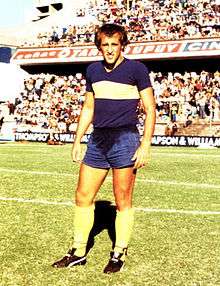
| No | Player | Position | Tenure | App. |
|---|---|---|---|---|
| 1 | DF | 1971–84 | 426 | |
| 2 | GK | 1976–88 | 417 | |
| 3 | DF | 1960–72 | 408 | |
| 4 | FW | 1997–2001, 2004–11 | 404 | |
| 5 | GK | 1988–96 | 400 | |
| 6 | MF | 1996–2002, 2007–14 | 388 | |
| 7 | MF | 1956–70 | 382 | |
| 8 | MF | 1934–47 | 379 | |
| 9 | MF | 1967–72, 1976–80 | 377 | |
| 10 | MF | 1942–56 | 365 |
Last updated on: 6 July 2016 – Top 10 most appearances of all time at historiadeboca.com.ar
Notable players
1905–1930s





















1930s–1970s























































1970s–1990s










































1990s–2000s
























2000s–

























FIFA World Cup participants
List of players that were called-up for a FIFA World Cup while playing for Boca Juniors. In brackets, the tournament played:
































Players gallery
 Pedro Calomino scored 97 goals during his career.
Pedro Calomino scored 97 goals during his career.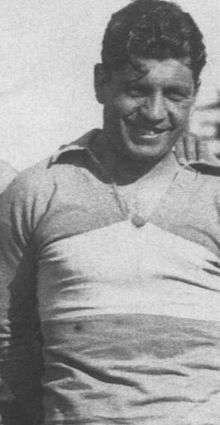 Ramón Muttis played for Boca between 1923 and 1932.
Ramón Muttis played for Boca between 1923 and 1932.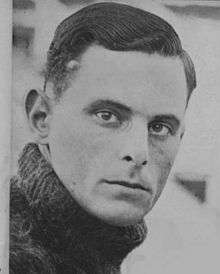 Américo Tesoriere played also for Argentina in the 1920s.
Américo Tesoriere played also for Argentina in the 1920s. Ludovico Bidoglio made 209 appearances and played 10 years for the club.
Ludovico Bidoglio made 209 appearances and played 10 years for the club.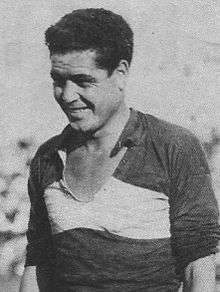 Roberto Cherro is the 2nd. all-time top scorer with 213 goals in 292 matches.
Roberto Cherro is the 2nd. all-time top scorer with 213 goals in 292 matches. Francisco Varallo, the 3rd. all-time top scorer with 181 goals.
Francisco Varallo, the 3rd. all-time top scorer with 181 goals. Delfín Benítez Cáceres scored 162 goals in 8 eight years playing for the Xeneize.
Delfín Benítez Cáceres scored 162 goals in 8 eight years playing for the Xeneize.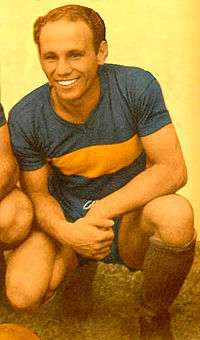 Natalio Pescia played 347 matches in 14 years at the club.
Natalio Pescia played 347 matches in 14 years at the club.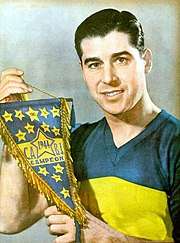 Ernesto Lazzatti played 379 games for Boca Juniors.
Ernesto Lazzatti played 379 games for Boca Juniors. Carlos Sosa played 294 matches in the 1940s.
Carlos Sosa played 294 matches in the 1940s.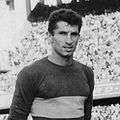 Antonio Rattín in 15 years with Boca Juniors played 352 matches.
Antonio Rattín in 15 years with Boca Juniors played 352 matches. Angel Rojas played from 1963 to 1971 becoming one of the greatest idols.
Angel Rojas played from 1963 to 1971 becoming one of the greatest idols. Antonio Roma played 12 years for the club with 313 appearances.
Antonio Roma played 12 years for the club with 313 appearances. Silvio Marzolini played 387 games from 1960 to 1972.
Silvio Marzolini played 387 games from 1960 to 1972. Hugo Gatti is the 2nd. all-time most capped player.
Hugo Gatti is the 2nd. all-time most capped player. Diego Maradona finished his professional career with Boca Juniors in 1997.
Diego Maradona finished his professional career with Boca Juniors in 1997.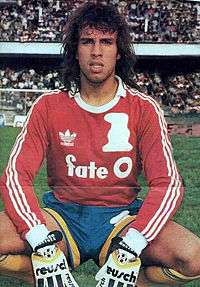 Carlos Navarro Montoya played 397 games in 8 years with the club.
Carlos Navarro Montoya played 397 games in 8 years with the club.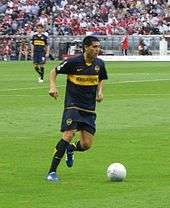 Román Riquelme has won 11 official titles with the team.
Román Riquelme has won 11 official titles with the team. Martín Palermo is the all-time top scorer with 236 goals in 404 matches.
Martín Palermo is the all-time top scorer with 236 goals in 404 matches.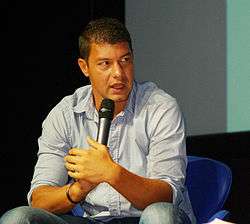 Sebastián Battaglia, the most winning player with 18 titles.
Sebastián Battaglia, the most winning player with 18 titles.
Coaches
The first Boca Juniors coach recorded is Mario Fortunato, who had been player before becoming coach of the team. Fortunato led Boca to win a total of five titles (4 league in 1930, 1931, 1934 and 1935) and one National cup (Copa de Competencia Británica in 1946).[124] He had three tenures on the club, coaching Boca Juniors in 1930–1936, 1946 and 1956.
Carlos Bianchi is the most successful coach in Boca Juniors' history, having won nine titles, including Aperturas in 1998, 2000 and 2003, the 1999 Clausura, the Copa Libertadores in 2000, 2001 and 2003, and the Intercontinental Cup in 2000 and 2003.
Juan Carlos Lorenzo (1976–79, 1987), El Toto, won five titles with the team, including the Copa Libertadores in 1977 and 1978, the Intercontinental Cup in 1977, and the Metropolitano and Nacional in 1976.
Alfio Basile also won 5 titles along with Mario Fortunato and Toto Lorenzo. With Basile, Boca won two domestic titles, 2005 Apertura and 2006 Clausura and three international (2005 Copa Sudamericana, 2005 and 2006 Recopa Sudamericana), all of them won within two years.
Miguel Ángel Russo was hired as Ricardo Lavolpe's replacement. Under his coaching Boca Juniors won the 2007 Copa Libertadores with a 5–0 overall rout of Brazilian Grêmio.
Julio César Falcioni led the team to the 2011 Apertura championship, which Boca won unbeaten with only 7 goals conceded in 19 rounds. With Falcioni as coach, Boca also won the 2011–12 Copa Argentina.
Institutional
Executive board
Jorge Amor Ameal is the current President of Boca juniors since December 2019, when he was elected over Christian Gribaudo, getting more than 51% of the votes (a record of 38,000 members went to the club to vote). Ameal won over main candidate Christian Gribaudo, returning to the presidency of the club after his first tenure in 2008–11, when he succeeded Pedro Pompilio after his sudden death.[125]
Apart from Ameal, the Boca Juniors' Executive Board consists of the following members:[126]
- 1st Vice-president: Mario Pergolini
- 2nd Vice-president: Juan Román Riquelme
- 3rd Vice-president: Roberto Digón
- General Secretary: Roberto Digón
- Treasurer: Carlos Montero
Staff
Presidents of Boca Juniors sections:[126]
- Football: Juan Román Riquelme
- Basketball: Alejandro Desimone
- Amateur Sports: Martín Mendiguren
- Culture: Christian Debortoli
Honours
National
League
- Primera División (34): 1919, 1920, 1923, 1924, 1926, 1930, 1931 LAF, 1934 LAF, 1935, 1940, 1943, 1944, 1954, 1962, 1964, 1965, 1969 Nacional, 1970 Nacional, 1976 Metropolitano, 1976 Nacional, 1981 Metropolitano, 1992 Apertura, 1998 Apertura, 1999 Clausura, 2000 Apertura, 2003 Apertura, 2005 Apertura, 2006 Clausura, 2008 Apertura, 2011 Apertura, 2015, 2016–17, 2017–18, 2019–20
National cups
- Supercopa Argentina (1): 2018
- Copa Argentina (3): 1969, 2012, 2015[127]
- Copa de Competencia Jockey Club (2): 1919, 1925 [127]
- Copa Dr. Carlos Ibarguren (5): 1919, 1923, 1924, 1940, 1944 [127]
- Copa Estímulo (1): 1926 [127][128]
- Copa de Competencia Británica George VI (1): 1946 [127][129]
Other cups
- Copa Bullrich (2): 1918, 1934 [note2 1]
International
- Intercontinental Cup (3): 1977, 2000, 2003 [note2 2]
- Copa Libertadores (6): 1977, 1978, 2000, 2001, 2003, 2007 [note2 3]
- Copa Sudamericana (2): 2004, 2005 [note2 3]
- Recopa Sudamericana (4): 1990, 2005, 2006, 2008 [note2 3]
- Supercopa Sudamericana (1): 1989 [note2 3]
- Copa de Oro (1): 1993 [note2 3]
- Copa Master de Supercopa (1): 1992 [note2 3]
- Tie Cup (1): 1919 [note2 4]
- Copa de Honor Cousenier (1) : 1920 [note2 4]
- Copa de Confraternidad Escobar–Gerona (2): 1945, 1946 [note2 4]
Friendly
- Torneo Triangular Buenos Aires: 1963[131]
- Torneo Cuadrangular de Montevideo: 1963[132]
- Mohammed V Trophy: 1964 [133]
- Trofeo Ciudad de San Sebastián (Spain): 1966[134]
- Copa Rio de la Plata: 1970[135]
- Trofeo Ciudad de Valladolid (Spain): 1975[136]
- Cuadrangular de los Grandes: 1985[137]
- Trofeo Naranja: 1985[138]
- Trofeo Isla de Tenerife: 1993 [139]
- Vodafone Cup (England): 2004 [140][141]
- Copa 100 Años de Atilio García (Uruguay): 2014[142]
- Antonio Puerta Trophy (Spain): 2016[143]
- Notes
- The Copa Bullrich was an official football competition contested by clubs playing in the Second Division. Boca Juniors won those titles playing with reserve teams so the senior squad had promoted to Primera División in 1913. The AFA has not included this competition into the list of national cups because only teams in Primera División participated in those competitions.[130]
- Organised by UEFA and Conmebol together
- CONMEBOL competition
- Organised by AFA and AUF together
Records and facts
- Seasons in Primera División: 107 (all seasons, since team's debut in 1913).[144]
- Largest win:
- Domestic: 11–1 to Tigre, on 7 June 1942.[145]
- International: 7–0 to Bolívar on 26 April 2007 at 2007 Copa Libertadores[146]
- Worst defeat:
- Domestic: 0–7 v San Isidro on 10 October 1915.[147]
- International: 1–6 v Palmeiras at 1994 Copa Libertadores[148]
- Worst position in official domestic tournaments: 19th. at Torneo Final 2013
- All-time topscorer: Martín Palermo (236 goals)
- Topscorer in a single tournament: Domingo Tarasconi (40 goals in 33 games during 1923 Primera División)[149]
- Topscorer at international tournaments: Martín Palermo (43 goals)
- Topscorer at Copa Libertadores: Román Riquelme (25 goals)[150][151]
- Most games unbeaten in domestic tournaments: 40 matches (from 15th fixture of Clausura 1998 to 16th fixture of 1999 Clausura)[152]
- Most capped player: Roberto Mouzo (426 matches)
- Player with most titles won: Sebastián Battaglia (17 titles)
- Goalkeeper with minute-record scoreless goal: Esteban Andrada (864' with no goals allowed)[153]
- Tied for 4th club in the world with most international cups won (18) [154]
Other sports sections
Football reserves and academy
The reserve and youth academy football teams of the club, currently coached by former club player Rolando Schiavi,[155] who debuted in February 2015.[156] Boca Juniors is the most winning Torneo de Reserva championships with 21 titles won since it was established in 1910.
Notable players from the youth academy include Américo Tesoriere, Natalio Pescia, Ernesto Lazzatti, Antonio Rattín, Ángel Clemente Rojas, Roberto Mouzo, Oscar Ruggeri, Diego Latorre, Carlos Tevez and Fernando Gago, among others.
Futsal
Boca Juniors compete in Primera División de Futsal, the top division of the futsal league system and organised by AFA. The club is the 2nd most winning team (after Club Pinocho) of Primera División, with 12 titles, the last won in 2017 after beating Kimberley in the finals.[157]
Basketball
The Boca Juniors basketball team has won the Argentine league three times (1996/97, 2003/04, 2006/07), five Argentine Cups (Copa Argentina 2002, 2003, 2004, 2005, 2006), the Argentine Top 4 (2004), and three South American Club Championships (2004, 2005, 2006).[158][159] It also reached the 2004–05 national finals (losing to Ben Hur). Their home arena is the Estadio Luis Conde, better known as La Bombonerita (small Bombonera).
Volleyball
Boca Juniors has a professional volleyball team that won the Metropolitan championship in 1991, 1992 and 1996, and achieved the second place in the 1996–97 A1 season. Because of a lack of sponsors, the team was disbanded, but later it was reincorporated through the coaching of former Boca player Marcelo Gigante; after playing in the second division, it returned to the A1 league in 2005.
In August 2015 it was announced that Boca Juniors's volleyball team would not participate in the Argentine major league (A1) from 2016. The decision was personally taken by Boca Juniors chairman, Daniel Angelici. The club alleged that taking part in a professional league resulted in a hugh commercial deficit so Boca Juniors declined to participate, although the volleyball department had reached an agreement with several sponsors which would put the money to cover the costs (about A$ 3 million).[160]
Women's football
The Boca Juniors women's football team plays in the Campeonato de Fútbol Femenino and have won the championship a record 23 times of which 10 were in succession from the 2003 Apertura to the 2008 Clausura.[161]
Though the club has not yet won any international competition, it secured the third place at the 2010 Copa Libertadores de Fútbol Femenino.
In Futsal, Boca has won 6 Championships: 1992, 1993, Clausura 1997, Apertura 1998, Clausura 2003 (Men), and 2004 (women).
Boca representatives also compete in other disciplines such as judo, karate, taekwondo, wrestling, weight lifting and gymnastics.[162]
Merchandising

Boca Juniors has expanded its activity beyond sport, providing its fans with a number of other products and services.
In 2003, it became the fifth football club in the world to open its own TV channel. Boca TV broadcast 24 hours a day, featuring sports programs and talk shows. The channel was closed in 2005 due to low audience, returning in 2015 as a website.[163] In 2005, a funerary company started to produce a line of coffins available for dead fans.[164][165] The club also opened a "Boca Juniors" exclusive section of 3,000 hectare in the Parque Iraola Cemetery of La Plata Partido in 2006.[166][167]
Also in 2006, Boca expanded its business launching its own fleet of taxis operating in Buenos Aires,[168][169] as well as its own brand of wine, called "Vino Boca Juniors".[170]
In 2012 Boca Juniors opened in Buenos Aires its first thematic hotel not only in Argentina but worldwide. The hotel was designed by Uruguayan architect Carlos Ott. All the rooms were decorated with the colours of the club, apart from photos and paintings of notable players in the history of the club.[171][172]
There is an Argentine steakhouse in Queens, NYC which is a Boca Juniors theme restaurant.[173][174]
Sponsorships
In racing, Argentine Turismo Carretera stock-car competition league spun off the Top Race V6 category, in which teams were sponsored by football teams.[175] Veteran race pilots Guillermo Ortelli and Ernesto Bessone and former Boca player Vicente Pernía drove for the "Boca Juniors" team; Ortelli finally won the first Top Race V6 championship with his car painted in Boca Juniors colors.[176]
References
- Ranking de campeones argentinos: así quedó la tabla histórica después del título de Boca, La Nación, 7 Mar 2020
- Boca se adueñó de la Superliga y estiró la distancia con River en la tabla histórica de títulos, Infobae, 7 Mar 2020
- Campeones de la Primera División on AFA website
- En la tabla histórica de títulos, Boca acortó más distancias, Clarín, 9 May 2018
- Copas Nacionales – Ganadores on AFA website (retrieved 4 November 2015)
- "Boca: Campeón de Honor" on TN, 27 September 2011
- "Cuando Boca se hizo Boca", Clarín, 3 April 2013
- 38 Campeones de Fútbol Argentino by Diego Estévez – Ediciones Continente – ISBN 9789507543692
- Independiente vs. Boca: quién tiene más títulos internacionales by Oscar Barnade, Clarín, 8 August 2018
- Cuadro total de títulos oficiales on Revisionismo del Fútbol, retrieved 29 June 2019
- Las competiciones oficiales de la CONMEBOL on Conmebol website, 19 Ago 2015
- International Cups Trivia by Karel Stokkermans on the RSSSF, 6 June 2019
- Cup Tie Archived 17 October 2012 at the Wayback Machine on RSSSF
- Honor Cup Archived 17 October 2012 at the Wayback Machine on RSSSF
- Copa de Confraternidad Escobar – Gerona Archived 8 February 2011 at the Wayback Machine on RSSSF
- "IFFHS Club World rankings statistics". Iffhs.de. Retrieved 5 May 2013.
- "South America's Club of the 1st Decade of the 21st Century (2001–2010)". IFFHS.de. Retrieved 15 February 2011.
- "Se cae un mito: la hinchada de Boca no suma la mitad más uno del país" – InfoBae
- "O mais grande" by Sergio Maffei, Olé, 6 February 2008
- "Deportes amateur" at club website
- "El Club: Historia at Boca Juniors official website". Bocajuniors.com.ar. Archived from the original on 29 January 2013. Retrieved 5 May 2013.
- "RSSSF Argentine divisional movements". Rsssf.com. 6 December 2006. Retrieved 5 May 2013.
- "Evolución histórica de la camiseta xeneize". Bocajuniors.com.ar. Retrieved 25 July 2019.
- Vaca, =Javier; Lodise, Sergio. "La camiseta rosa". Revista del CECAD #3 February 2013. Calameo.com. Retrieved 5 May 2013.
- Georgina Turner and James Dart (23 November 2005). "Turner, Georgina & Dart, James. "Nicking the shirts off their backs," ''The Guardian'' (London, UK), Wednesday 23 November 2005". Football.guardian.co.uk. Retrieved 5 May 2013.
- Boca fue el Milan contra la "U", Perfil, 14 June 2012
- Las camisetas más polémicas de Boca a lo largo de su historia, Diario Popular, 8 December 2013
- Interview to Diego Maradona in Planeta Boca Juniors
- "La banda amarilla salió a la cancha", Clarín, 15 January 2005
- La camiseta nueva, a la venta
- Se viene el estreno de la camiseta violeta, Clarín, 11 January 2013
- La versión "alternativa" de la camiseta de Boca no gustó, La Razón, 1 July 2013 (Archived 6 January 2016)
- Y una tarde, Boca usó la polémica camiseta rosa, La Nación, 8 December 2013
- Hinchas de Boca mostraron su repudio a la camiseta rosa, Diario Popular, 8 December 2013
- "Parecida pero diferente", Clarín, 7 February 2014
- "Boca sigue innovando: ahora saca a la venta una camiseta flúo" Archived 18 October 2015 at the Wayback Machine, Diario Registrado, 8 February 2014
- "http://www.infobae.com/2016/04/04/1801879-es-negra-la-polemica-nueva-camiseta-boca-el-dorado-la-franja/", Infobae, 4 April 2016
- Bronca en Boca por la nueva camiseta negra: "No la vamos a usar", dijo enojado Angelici, El Día, 7 April 2016
- "Boca usó la camiseta alternativa negra con números y vivos dorados", El Liberal, 11 April 2016
- Boca-Adidas, una relación histórica by Juan M. Compte on El Cronista, 9 Feb 2020
- Boca, Adidas y los detalles de un contrato único: casi el doble de lo que cobra River y dólar a 70 pesos, La Nación, 31 Jul 2019
- El Club – camiseta on Boca Juniors website (Archived, 22 April 2012)
- "Boca Xentenario 2005", Imborrable Boca, 27 December 2008
- Camiseta edición limitada de Boca by Diego Silber on Marca de Gol, 14 January 2012
- "¿Cómo vamos a querer jugar contra River si ellos están en la B? – PlayFútbol". Playfutbol.infobae.com. 10 February 2012. Archived from the original on 13 July 2012. Retrieved 5 May 2013.
- Dinamic Studio, Diseño y desarrollo de sitios web. www.dinamicstudio.com. "Banco Francés será sponsor de Boca Juniors y negocia la vuelta del Superclásico – País". impulsonegocios.com. Retrieved 5 May 2013.
- El escudo on Boca Juniors website, retrieved 22 March 2019
- "Boca" on Shakespear website
- Ronald Shakespear; el diseñador omnipresente by Ariel Hendler on Clarín, 20 December 2015
- Cien años de multitud: El período amateur (1905–1930) by Horacio D. Rosatti – Ed. Galerna, 2008 – ISBN 9789505565405
- "Breve historia de la isla Demarchi" on La Nación, 30 Ago 2012
- "La Pasion Boca-Boca and their stadiums" (in Spanish). Lapasiondeboca.com. Archived from the original on 5 March 2012. Retrieved 5 May 2013.
- http://viejosestadios.blogspot.it/p/darsena-sur.html
- "RSSSF Argentina 1915". Rsssf.com. Archived from the original on 30 May 2013. Retrieved 5 May 2013.
- "La Bombonera" on Planeta Boca Juniors
- "Midfield Dynamo stadium profiles". Midfielddynamo.com. Retrieved 5 May 2013.
- "Tiembla la Bombonera" on El Observador, 12 December 2014
- "Crespo: La Bombonera tiembla, es muy fuerte" on Cancha Llena, 11 January 2013
- Usborne, David (19 January 2011). "Independent article". London: Travel.independent.co.uk. Archived from the original on 18 January 2008. Retrieved 5 May 2013.
- Boca Juniors official website
- Historia de Boca Juniors: 1913
- Historia de Boca Juniors: 1938
- Vickery, Tim (2 October 2006). "Tim Vickery Column BBC Football". BBC News. Retrieved 5 May 2013.
- World derbies: Boca Juniors v River Plate – BBC news.
- "ESPN Deportes statistics". Espndeportes-akamai.espn.go.com. Archived from the original on 11 July 2011. Retrieved 5 May 2013.
- "Adiós, "Raulito"" (in Spanish). infobae.com. 1 May 2008. Archived from the original on 3 August 2009. Retrieved 27 May 2008.
- Flags of the World article. The word xeneize is Genoese dialect for the Ligurian word zeneize, which means "Genoese".
- "see comment by senomar1234 23 June 2007 18:44:25". Taringa. 23 June 2007. Retrieved 5 May 2013.
- "Clarín Article" (in Spanish). Clarin.com. 18 February 2006. Retrieved 5 May 2013.
- "Article" (in Spanish). Canaltrans.com. Retrieved 5 May 2013.
- "Mobsters and hooligans; The identity construction of the barra brava of Boca Juniors in the Buenos Aires neighbourhood La Boca". universiteit utrecht. Retrieved 4 April 2014.
- Barrionuevo, Alexei; Newbery, Charles (26 November 2011). "In Argentina, Violence Is Part of the Soccer Culture". The New York Times. Retrieved 4 April 2014.
- "Argentina: 'Barras Bravas,' the soccer mafia". infosurhoy.com. Archived from the original on 7 April 2014. Retrieved 4 April 2014.
- Laura Vidal, Venezuela (19 September 2010). "See La 12 and La Bombonera section". Globalvoices.org. Retrieved 5 May 2013.
- Russian-Ukrainian fan-site Narod.ru (in Russian)
- Bocajuniors.com.ar: Listado de Peñas Archived 3 May 2009 at the Wayback Machine(in Spanish)
- Labaton, Dana; Szerman, Luli (March 2003). "Club Atlético Boca Juniors – Los bosteros de la rivera" (in Spanish). Piedra Libre. Archived from the original on 15 March 2008. Retrieved 21 June 2008.
- "Cómo viajó "La 12" a Japón y logró ingresar al estadio olímpico de Tokio" (in Spanish). MDZ Online. 12 December 2007. Archived from the original on 30 September 2012. Retrieved 21 June 2008.
- "Boca Juniors Considers Starting an MLS Expansion Team". theoffside.com. 31 July 2007. Archived from the original on 7 August 2008. Retrieved 21 June 2008.
- "BBC Academy, famous football derbies". Newssearch.bbc.co.uk. Retrieved 5 May 2013.
- "50 sporting things you must do before you die". London: Observer.guardian.co.uk. Retrieved 5 May 2013.
- Superclásico Archived 17 October 2008 at the Wayback Machine – TyC Sports(in Spanish)
- "Boca Juniors squad". Soccerway. 21 April 2017. Retrieved 21 April 2017.
- "Los jugadores que más partidos jugaron (Top 180)". historiadeboca.com.ar. Retrieved 1 March 2011.
- "Los jugadores con más goles marcados (Top 60)". historiadeboca.com.ar. Retrieved 1 March 2011.
- "Pieralini, Máximo". historiadeboca.com.ar. Retrieved 26 October 2010.
- "Taggino, Francisco". historiadeboca.com.ar. Retrieved 3 October 2010.
- "Bertolini, Enrique". historiadeboca.com.ar. Retrieved 3 October 2010.
- "Elli, Alfredo". historiadeboca.com.ar. Retrieved 9 November 2010.
- "Bozzo, Pablo". historiadeboca.com.ar. Retrieved 9 November 2010.
- "Busso, Mario". historiadeboca.com.ar. Retrieved 3 October 2010.
- "Cerroti, Antonio". historiadeboca.com.ar. Retrieved 25 April 2020.
- "Kuko, Esteban". historiadeboca.com.ar. Retrieved 3 October 2010.
- "Moreyras, Gerardo". historiadeboca.com.ar. Retrieved 3 October 2010.
- "Penella, Donato". historiadeboca.com.ar. Retrieved 3 October 2010.
- "Marante, José Manuel". historiadeboca.com.ar. Retrieved 9 November 2010.
- "Ibáñez, Segundo Gregorio". historiadeboca.com.ar. Retrieved 2 October 2010.
- "Dezorzi, Rodolfo Justo". historiadeboca.com.ar. Retrieved 3 October 2010.
- "Otero, Héctor Raúl". historiadeboca.com.ar. Retrieved 3 October 2010.
- "Busico, Marcos Ricardo". historiadeboca.com.ar. Retrieved 3 October 2010.
- "González, Herminio Antonio". historiadeboca.com.ar. Retrieved 9 November 2010.
- "Colman, Juan Carlos". historiadeboca.com.ar. Retrieved 9 November 2010.
- "Edwards, Federeico Roberto". historiadeboca.com.ar. Retrieved 8 November 2010.
- "Rodríguez, Juan José". historiadeboca.com.ar. Retrieved 2 October 2010.
- "Nardiello, Osvaldo". historiadeboca.com.ar. Retrieved 3 October 2010.
- "Ovide, Armando Oscar". historiadeboca.com.ar. Retrieved 9 November 2010.
- "Nicolau, Miguel Alberto". historiadeboca.com.ar. Retrieved 14 October 2010.
- "Sánchez, Rubén Omar". historiadeboca.com.ar. Retrieved 9 November 2010.
- "Rogel, Roberto Domingo". historiadeboca.com.ar. Retrieved 9 November 2010.
- "Coch, Jorge". historiadeboca.com.ar. Retrieved 3 October 2010.
- "Medina, Orlando José". historiadeboca.com.ar. Retrieved 20 October 2010.
- "Peracca, Rubén". historiadeboca.com.ar. Retrieved 3 October 2010.
- "Alves, Abel Aníbal". historiadeboca.com.ar. Retrieved 14 October 2010.
- "Suárez, José María". historiadeboca.com.ar. Retrieved 3 October 2010.
- "Alves, Hugo César". historiadeboca.com.ar. Retrieved 20 October 2010.
- "Perotti, Hugo Osmar". historiadeboca.com.ar. Retrieved 20 October 2010.
- "Córdoba, Carlos Héctor". historiadeboca.com.ar. Retrieved 9 November 2010.
- "Passucci, Roberto Aníbal". historiadeboca.com.ar. Retrieved 9 November 2010.
- "Carrizo, Fabián Gustavo". historiadeboca.com.ar. Retrieved 9 November 2010.
- "Stafuza, Ivar Gerardo". historiadeboca.com.ar. Retrieved 9 November 2010.
- "Hrabina, Enrique Oscar". historiadeboca.com.ar. Retrieved 9 November 2010.
- "Pico, Walter Reinaldo". historiadeboca.com.ar. Retrieved 9 November 2010.
- "Moyá, Carlos Daniel". historiadeboca.com.ar. Retrieved 3 October 2010.
- Copa de Competencia 1946 on Historia de Boca
- Jorge Amor Ameal ganó las elecciones y es el nuevo presidente de Boca by Federico Cristofanelli on Infobae, 9 Dec 2019
- Autoridades on Boca Juniors website, 9 Jan 2020
- "Copas Nacionales" since 1900, at AFA website
- Ciullini, Pablo (24 September 2009). "Argentina – Copa Estímulo Asociación Argentina – 1926". RSSSF. Retrieved 27 March 2011.
- Gorgazzi, Osvaldo José (16 March 2001). "Argentina – Torneo Competencia "George VI" – 1946". RSSSF. Retrieved 27 March 2011.
- Campeones de Primera División on AFA website
- "Torneo Triangular Buenos Aires 1963". rsssf.com. Retrieved 8 March 2020.
- "Torneo Cuadrangular de Montevideo 1963". rsssf.com. Retrieved 8 March 2020.
- Boca recibió una invitación para jugar un partido amistoso en Marruecos, Telam, 7 April 2016
- International Tournaments played in San Sebastián 1910–1993 on RSSSF.com
- "Copa Rio de la Plata 1970". rsssf.com. Retrieved 10 March 2020.
- Trofeo Ciudad de Valladolid (Valladolid-Spain) 1972–2016 on RSSSF.com
- "Cuadrangular de Grandes (Buenos Aires) 1986". rsssf.com. Retrieved 10 March 2020.
- "Trofeo Naranja 1985". ciberche.net. Retrieved 8 March 2020.
- Trofeo Ciudad de Santa Cruz de Tenerife-Isla de Tenerife (Tenerife-Spain) 1975–2013 on RSSSF.com
- Manchester United Official Members' Yearbook 2004/05, Carlton Books, 2005. p. 168. – ISBN 0233001638
- Vodafone Cup summary
- La "Copa 100 años de Atilio García" se va a Buenos Aires on CNF official website
- Boca-Sevilla: el xeneize ganó 4–3 con dos goles de Tevez, uno de Benedetto y otro de Pavón, La Nación, 11 November 2016
- "A 107 años del primer partido de Boca Juniors en Primera División". lacapitalmdp.com. Retrieved 26 April 2020.
- Argentina 1942 at RSSSF
- 2007 Copa Libertadores Archived 27 May 2008 at the Wayback Machine at RSSSF
- Argentina 1915 Archived 30 May 2013 at the Wayback Machine at RSSSF
- 1994 Copa Libertadores at RSSSF
- Argentina – List of Topscorers Archived 8 June 2009 at the Wayback Machine
- "Riquelme récord: Mirá todos sus goles en la Copa" on TN.com.ar
- "Riquelme, máximo goleador en actividad de la Libertadores y de Boca Juniors" at Pasion Libertadores.com, 19 May 2013
- Unbeaten in the Domestic League, RSSSF
- "El nuevo récord que quebró Andrada en Boca". tycsports.com. Retrieved 26 April 2020.
- International Cups at RSSSF
- "Rolando Schiavi deja a Martín Palermo y vuelve a Boca para dirigir a la Reserva", Infobae, 9 December 2014
- "El Flaco Schiavi debutó como DT de la reserva de Boca con una goleada", Cancha Llena, 14 February 2015
- Boca, el campeón del futsal on TyC Sports, 17 December 2017
- "Liga Nacional de Básquet – Boca Juniors" (in Spanish). LNB.com.ar. Archived from the original on 10 October 2009. Retrieved 17 September 2009.
- "El Básquetbol de Boca Juniors" (in Spanish). Bocajuniors.com.ar. Archived from the original on 26 September 2009. Retrieved 17 September 2009.
- "Angelici bajó al equipo masculino de Boca de la Liga Argentina de Voley" Archived 25 August 2015 at the Wayback Machine, Telam,
- "SUPLE GOLAZO!". Diario El Heraldo. Archived from the original on 6 July 2011. Retrieved 1 August 2010.
- "Deportes". Boca Juniors official website. Archived from the original on 3 June 2010. Retrieved 1 August 2010.
- Boca TV
- Al más allá, en un ataud de Boca, Infobae, 4 April 2006
- "Boca soccer fans' grave devotion"– BBC news
- Inauguraron el cementerio de Boca, La Nación, 7 September 2006
- "Loyalty to Boca Juniors now truly cradle to grave"– International Herald Tribune
- "Boca taxis sure to be shunned by River fans" Archived 3 June 2008 at the Wayback Machine – tiscali.news
- Boca Juniors lanza su flota de taxis
- "Boca fans – in life & death" Archived 16 September 2006 at the Wayback Machine – TheWorldGame
- "Un hotel azul y oro", Tiempo Argentino, 23 October 2011 Archived 11 April 2013 at Archive.today
- "Conocé "Boca Hotel", el lugar donde duerme la pasión xeneize", Cancha LLena, 4 April 2012
- "Boca Juniors Restaurant". Retrieved 14 March 2012.
- Un cable a tierra para los argentinos en Nueva York, TyC Sports, 18 June 2016
- ¿Boca quiere copar el automovilismo? on La Nueva, 10 January 2005
- Ortelli festejó su título con los colores de Boca, La Nación, 19 December 2005
External links
| Wikimedia Commons has media related to Boca Juniors. |
- Official website

- Boca Juniors results and statistics at RSSSF
- History of Boca Juniors at Historiadeboca.com.ar (in Spanish)
- Player biographies at Informexeneize.com.ar (in Spanish)